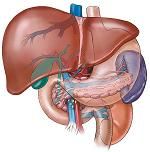Recommendations to Improve Liver Health in Hepatitis B, Hepatitis C Patients
Although it is widely understood that hepatitis B virus (HBV) and hepatitis C virus (HCV) are the leading causes of liver cirrhosis and liver cancer, an alarming number of HBV and HCV carriers have unhealthy habits that result in poor liver health.

Although it is widely understood that hepatitis B virus (HBV) and hepatitis C virus (HCV) are the leading causes of liver cirrhosis and liver cancer, a study published in Cancer Nursing reports an alarming number of HBV and HCV carriers have unhealthy habits that result in poor liver health.
To learn about the behavior and attitudes of HBV and HCV carriers, a team of researchers in China conducted interviews with 6,805 participants from August 2011 to July 2012. The participant pool was limited to candidates aged 20 years or older who were able to live independently, could either complete the questionnaire in Mandarin or Taiwanese, had access to their community hospital, and did not have a learning disability.
According to the researchers, a notable percentage of participants had either HBV (18.7%) or HCV (20.8%). Despite reporting risk factors for poor liver function among HBV and HCV carriers that included “being overweight, fasting blood sugar levels >110 mg/dL, systolic blood pressure >140 mm Hg, smoking, betel nut chewing and alcohol consumption,” the investigators discovered a large percentage of the study subjects participated in those modifiable hazardous behaviors.
For example, 28.9% of the HBV patients had consumed alcohol, 14.2% were betel nut chewers, and 21.8% were smokers. Additionally, 14.7% of the HCV patients were drinkers, 9.5% chewed betel nuts, and 14.6% identified as smokers.
The authors also noted many HBV and HCV carriers did not engage in habits that could potentially improve liver function. Specifically, 56.1% of HBV carriers and 57.3% of HCV carriers did not exercise regularly, and about two-thirds of HBV and HCV carriers had not undergone annual physical check-ups ups over a 5-year period.
In an effort to promote healthier behaviors among affected individuals, the researchers offered the following recommendations to clinicians:
- Educate the community on liver disease risk factors.
- Prevent HBV and HCV transmission through methods like avoiding blood donations.
- Utilize resources from local health agencies to encourage healthy lifestyle resources.
- Refer patients with abnormal liver biomarkers for further diagnosis and treatment.
- Develop a phone correspondence system to remind HBV and HCV carriers to attend regular checkups.

